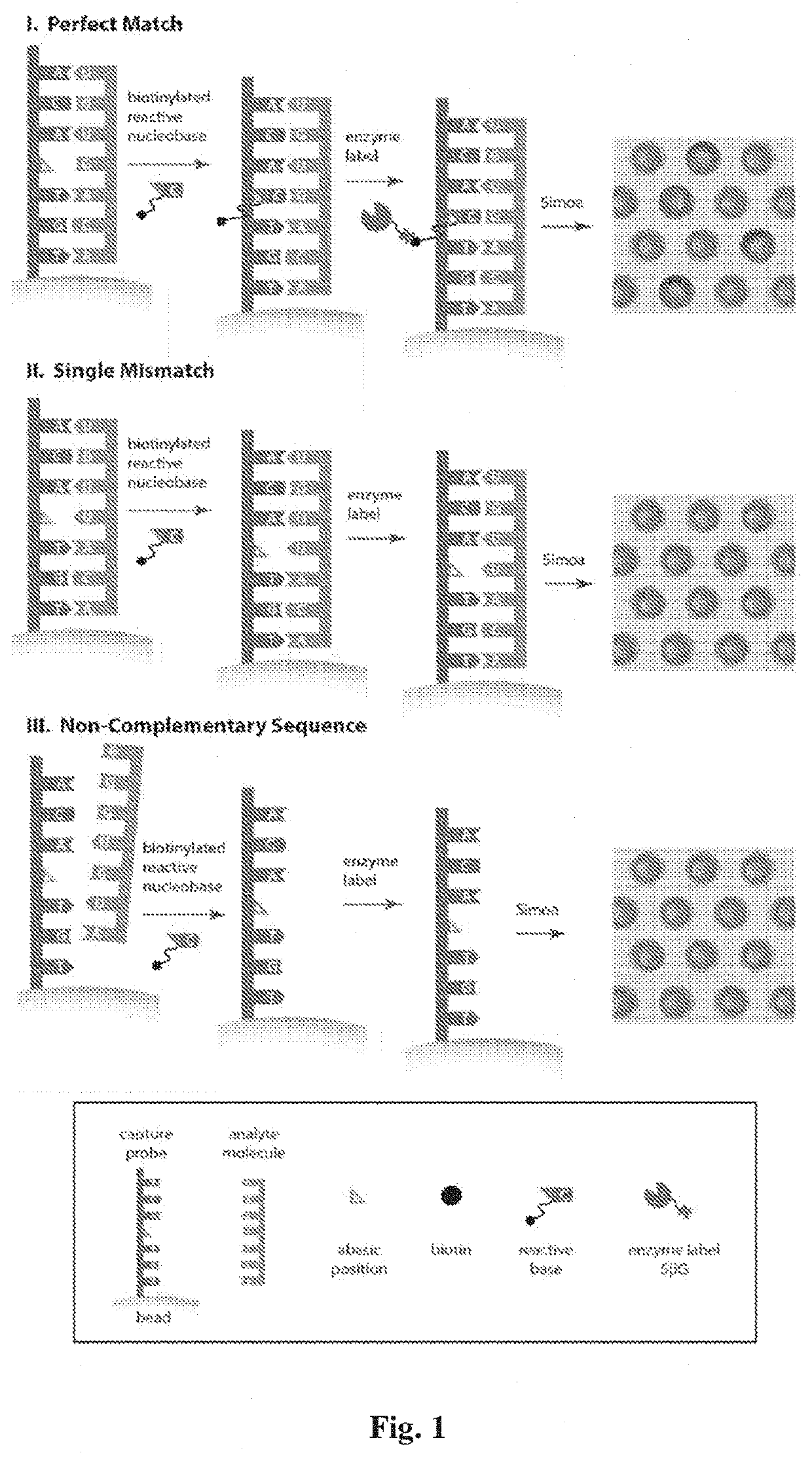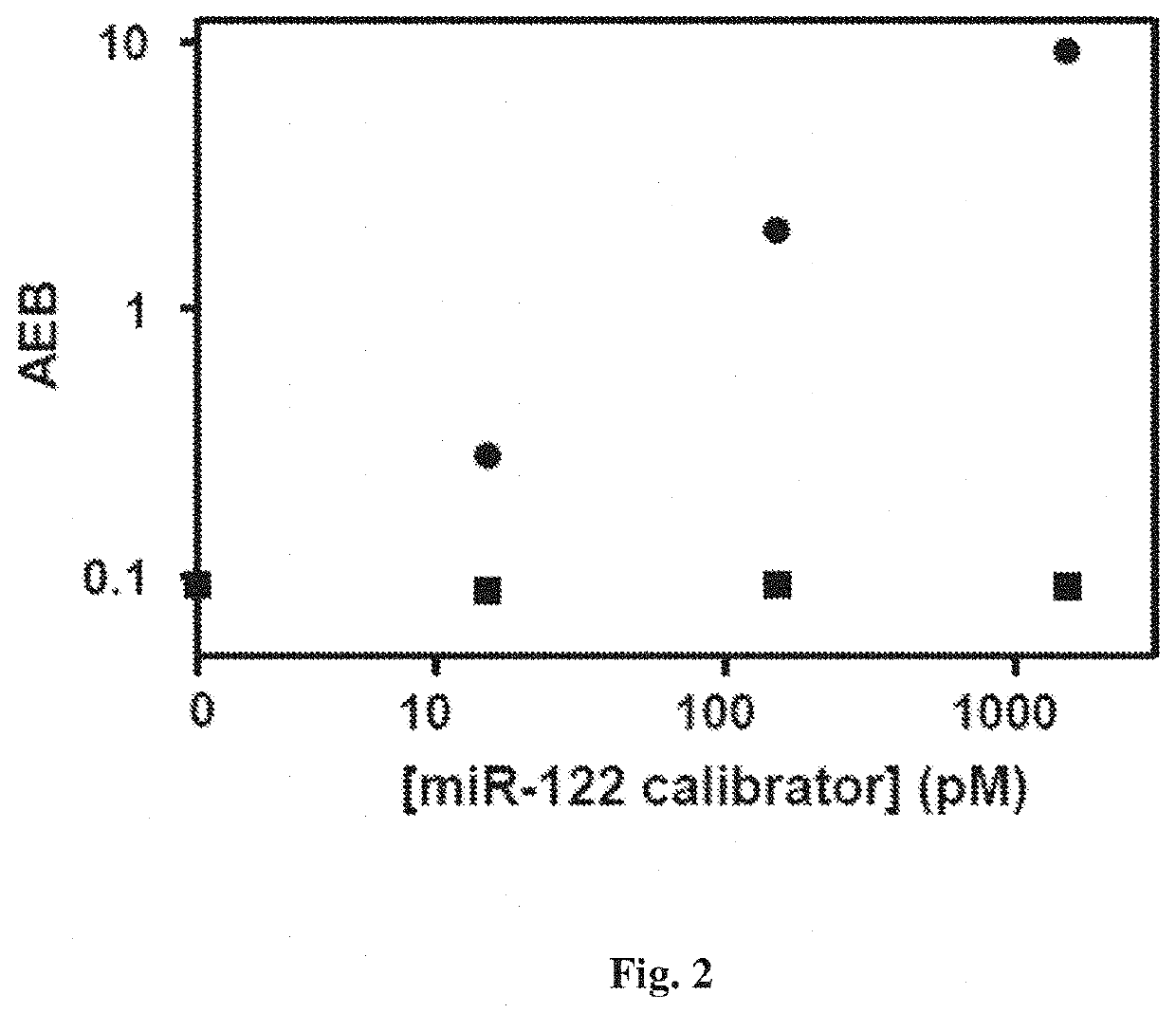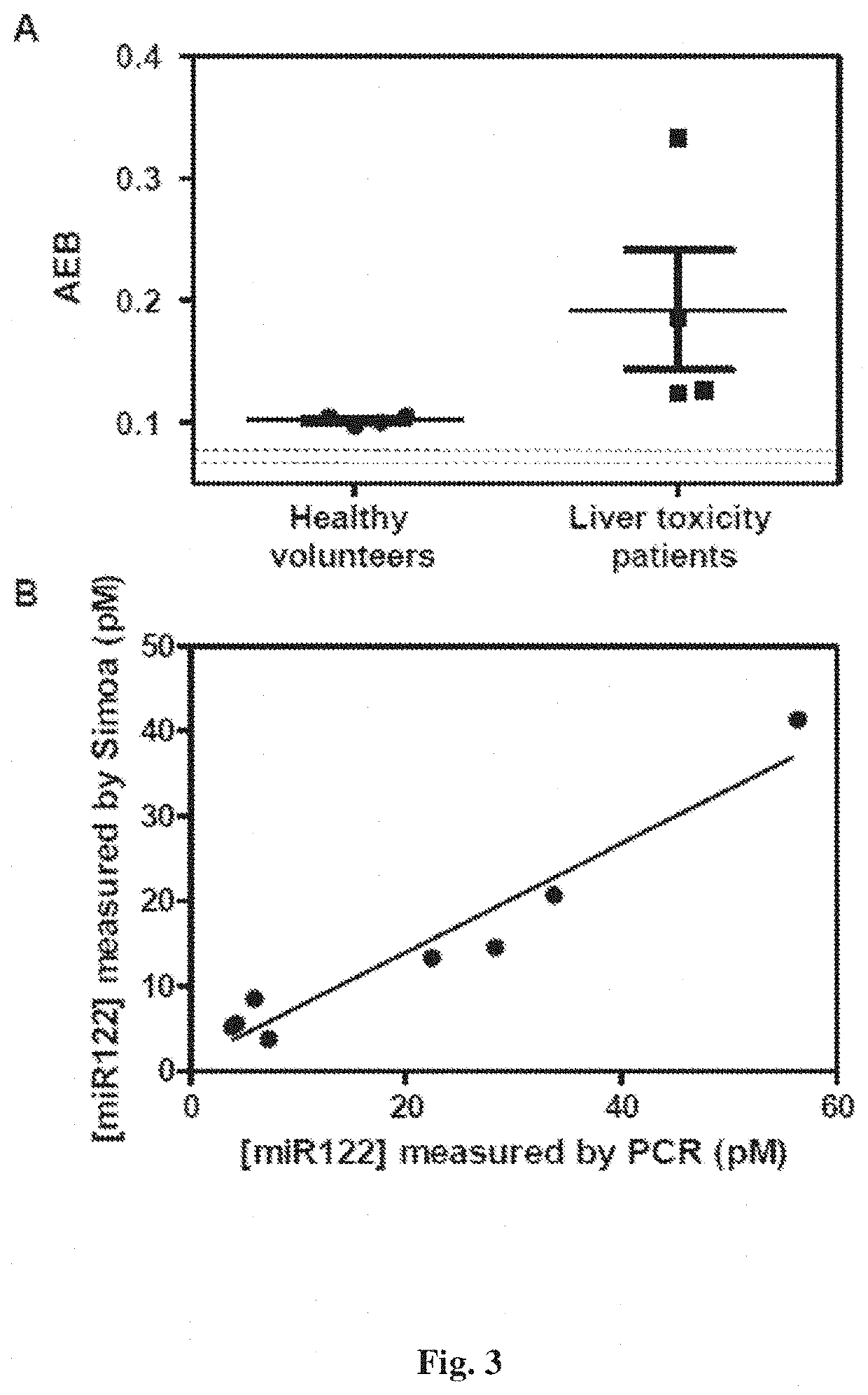Single molecule detection and quantification of nucleic acids with single base specificity
a single molecule, nucleic acid technology, applied in the direction of instruments, biochemistry apparatus and processes, fluorescence/phosphorescence, etc., can solve the problems of pcr also suffering from bias, short strands of rna detection are particularly difficult, and methods have limitations in detecting na
- Summary
- Abstract
- Description
- Claims
- Application Information
AI Technical Summary
Benefits of technology
Problems solved by technology
Method used
Image
Examples
example 1
and Quantification of microRNA Using Single Nucleobase Labelling in Combination with Simoa Assay
[0080]An abasic peptide nucleic acid probe (PNA), containing a reactive amine instead of a nucleotide at a specific position in the sequence, for microRNA was conjugated to superparamagnetic beads. These beads were incubated with a sample containing microRNA, a biotinylated reactive nucleobase that was complementary to the missing base in the probe sequence, and a reducing agent. When a target molecule with an exact match in sequence hybridized to the capture probe, the reactive nucleobase was covalently attached to the backbone of the probe by a dynamic covalent chemical reaction. Single molecules of the biotin-labeled probe were then labeled with streptavidin-β-galactosidase (SβG), and the beads were loaded into an array of femtoliter wells, and sealed with oil. The array was imaged fluorescently to determine which beads were associated with single enzymes, and the average number of enz...
example 2
Validation of Single Base Labelling-Simoa Assay for Ultrasensitive Detection and Quantification of MiR-122 in Serum
[0095]The Simoa assay provided herein allows detection of short nucleic acids with high specificity using just a single probe, rather than multiple probes and primers used in most approaches for measuring miRNA. This specificity resulted from specific hybridization between the target and probe sequences, and incorporation of a single label. The use of a single probe greatly simplifies the measurement of short sequences of nucleic acids by simplifying probe design, and reducing the number of interactions that need to be screened for cross-reactivity in multiplex assays.
[0096]The Simoa assay provided herein is a sensitive and specific assay for detection of nucleic acids (e.g., miR-122). The Simoa assay may be used for detection of any nucleic acid biomarkers, such as nucleic acid biomarkers of liver toxicity, cancer, and sepsis. Alternatively, or in addition to, the Simo...
PUM
| Property | Measurement | Unit |
|---|---|---|
| pH | aaaaa | aaaaa |
| pH | aaaaa | aaaaa |
| pH | aaaaa | aaaaa |
Abstract
Description
Claims
Application Information
 Login to View More
Login to View More - R&D
- Intellectual Property
- Life Sciences
- Materials
- Tech Scout
- Unparalleled Data Quality
- Higher Quality Content
- 60% Fewer Hallucinations
Browse by: Latest US Patents, China's latest patents, Technical Efficacy Thesaurus, Application Domain, Technology Topic, Popular Technical Reports.
© 2025 PatSnap. All rights reserved.Legal|Privacy policy|Modern Slavery Act Transparency Statement|Sitemap|About US| Contact US: help@patsnap.com



